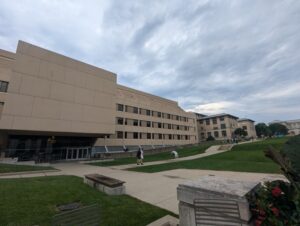
Lucian L. Leape, a surgeon whose pioneering work in the 1990s laid the foundation for the field of patient safety, passed away on Monday at his home in Lexington, Massachusetts. He was 94. His son, James, confirmed the cause was heart failure. Dr. Leape’s groundbreaking research into medical errors has led to the implementation of patient safety programs worldwide, saving countless lives.
In the 1980s, while serving as chief of pediatric surgery at Tufts University, Dr. Leape observed a troubling pattern of frequent mistakes resulting in significant patient harm and even death. This realization prompted him to make a bold career shift, leaving his full-time surgical practice to focus on research. Collaborating with colleagues at Harvard, he embarked on a study that would become a cornerstone in medical safety.
The Harvard Medical Practice Study
Dr. Leape’s work culminated in the Harvard Medical Practice Study, which meticulously documented the prevalence of injuries and deaths due to medical errors in New York State. This study was instrumental in changing the narrative around medical mistakes, shifting the focus from individual blame to systemic issues within healthcare systems.
The findings of the study were further expanded upon in the landmark report, “To Err Is Human: Building a Safer Health System,” published in 1999 by the Institute of Medicine, now known as the National Academy of Medicine. The report estimated that between 44,000 and 98,000 Americans died each year due to medical errors, emphasizing that these errors were often the result of flawed systems rather than individual incompetence.
“To Err Is Human” fundamentally altered the healthcare landscape by highlighting that systemic changes, rather than punitive measures against individuals, were necessary to improve patient safety.
Impact and Legacy
The publication of “To Err Is Human” was a watershed moment for the medical community, sparking widespread reform in healthcare practices. Hospitals and medical institutions began to implement safety protocols, and the concept of a “culture of safety” became a guiding principle in healthcare settings.
Dr. Leape’s work did not stop with the publication of the report. He continued to advocate for patient safety, serving on various panels and advisory boards. His efforts were recognized with numerous awards, including the John M. Eisenberg Patient Safety and Quality Award, which honors individuals and organizations making significant contributions to patient safety and quality.
A Visionary’s Influence
Dr. Leape’s influence extended beyond the borders of the United States. His work inspired international efforts to improve patient safety, with countries around the world adopting similar frameworks to reduce medical errors. The World Health Organization has cited his contributions as pivotal in shaping global health policies.
Experts in the field continue to build on Dr. Leape’s legacy, developing new technologies and methodologies to further enhance patient safety. His emphasis on systemic solutions over individual blame remains a guiding principle in the ongoing efforts to improve healthcare outcomes.
“Dr. Leape’s insights have saved thousands of lives and will continue to do so as healthcare systems evolve,” said Dr. Atul Gawande, a renowned surgeon and public health researcher.
Looking Forward
As the healthcare industry continues to grapple with challenges such as the COVID-19 pandemic, Dr. Leape’s work serves as a reminder of the importance of vigilance and innovation in patient safety. His legacy will undoubtedly inspire future generations of healthcare professionals to prioritize safety and quality in their practice.
Dr. Leape is survived by his children and grandchildren, who, like the medical community, mourn the loss of a visionary leader whose contributions have left an indelible mark on the world.
The field of patient safety, now a critical component of medical education and practice, owes much to Dr. Leape’s pioneering efforts. As healthcare systems continue to evolve, his work remains a cornerstone, guiding the way toward safer, more effective patient care.





